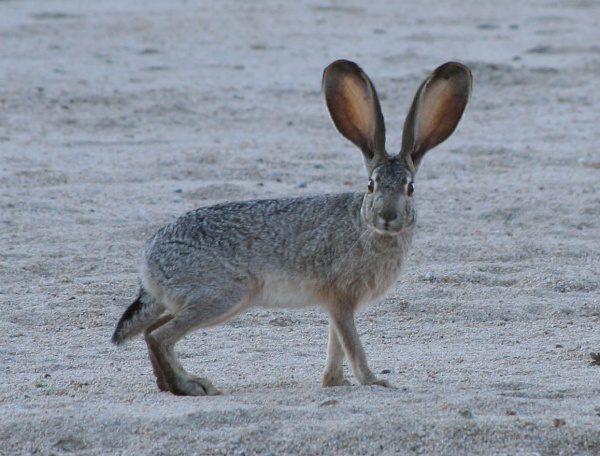Facts About Black-tailed jackrabbit
The black-tailed jackrabbit, also known as the American desert hare, is a common sight throughout the western United States and Mexico. As one of the largest hares in North America, these animals can reach up to 2 feet in length and weigh between 3 to 6 pounds. They thrive in shrub-grassland habitats and are notable for their year-round breeding, typically producing litters of about four young. Unlike some animals, black-tailed jackrabbits do not migrate or hibernate; they remain in their habitat throughout the year. Their diet is quite diverse, including shrubs, small trees, grasses, and forbs.
Black-tailed jackrabbits are easily identified by their long ears and powerful hind legs. There are 17 different subspecies, with the western and eastern ones being particularly distinct. Their extensive range covers areas from central Washington to Missouri and extends south to Baja California Sur and Zacatecas. Interestingly, they have also been successfully introduced to new regions.
These jackrabbits prefer plant communities that provide a mix of shrubs, grasses, and forbs, favoring moderately open spaces without dense undergrowth. Contrary to the text, their activity patterns are crepuscular, meaning they are most active during the dawn and dusk hours, though some activity during daylight hours is not uncommon. Their diet changes with the seasons and climate but continually includes a variety of shrubs, small trees, grasses, and forbs.

 Canada
Canada